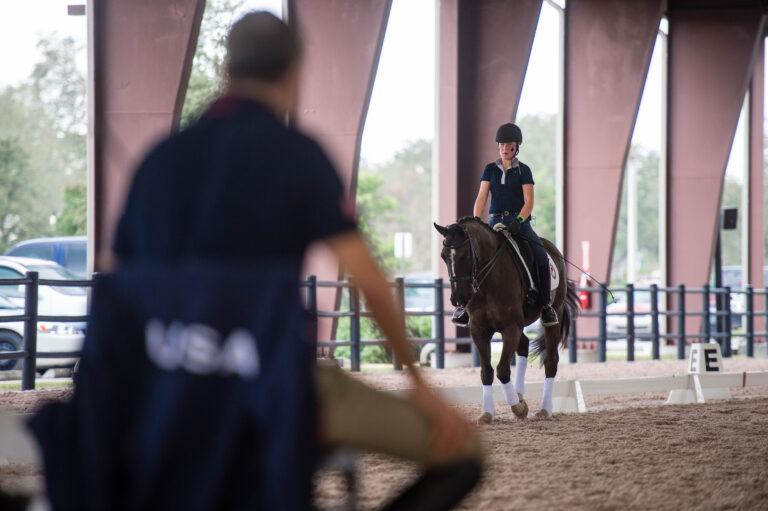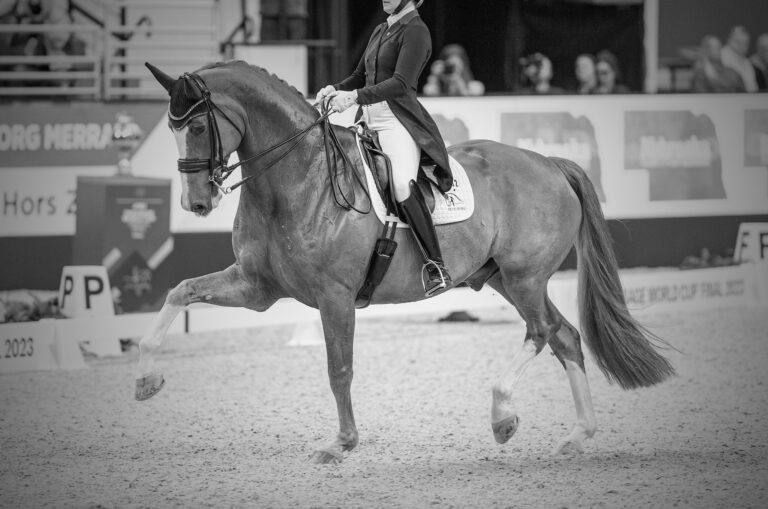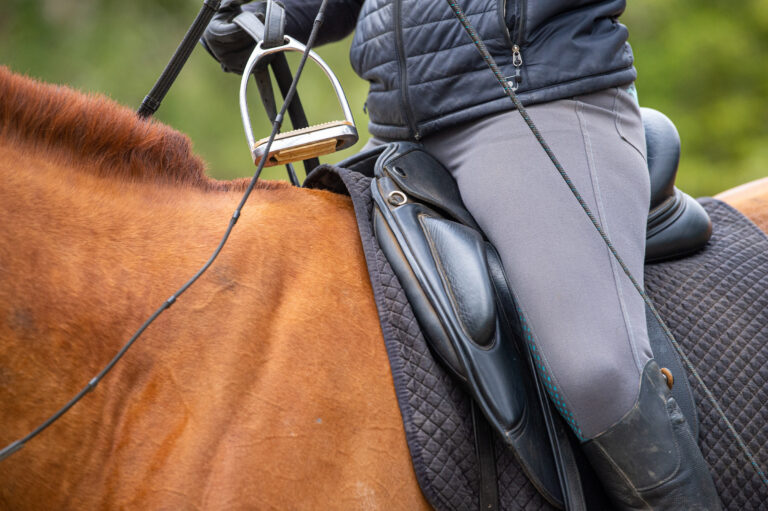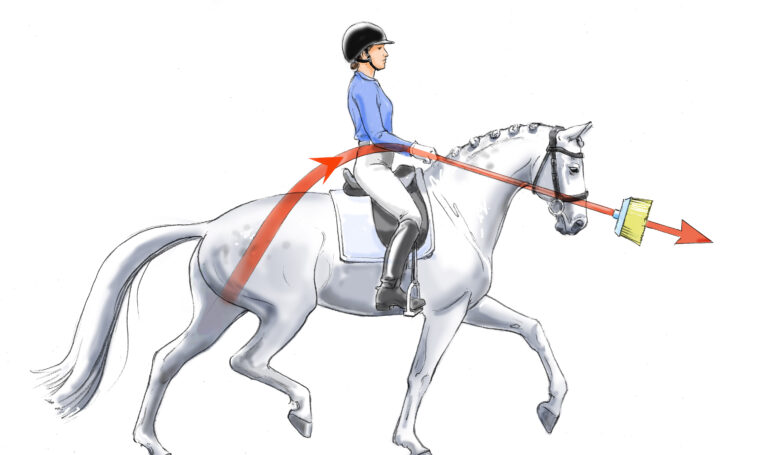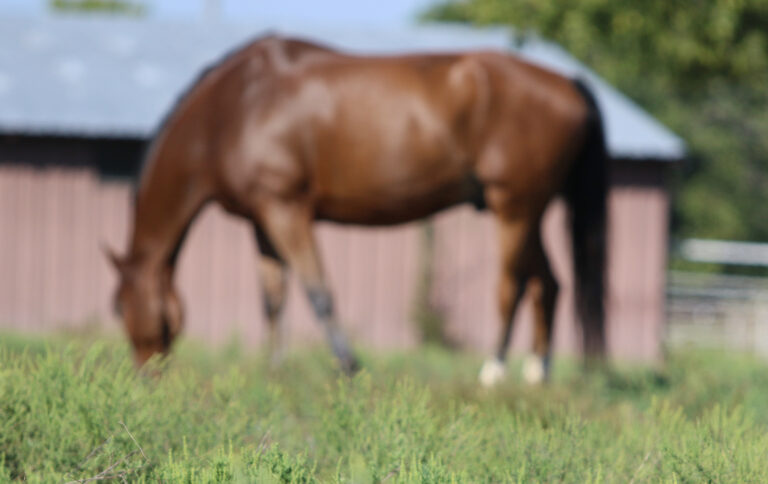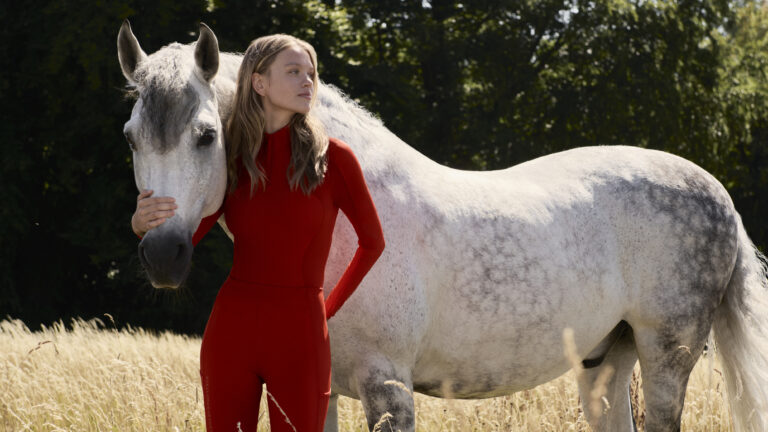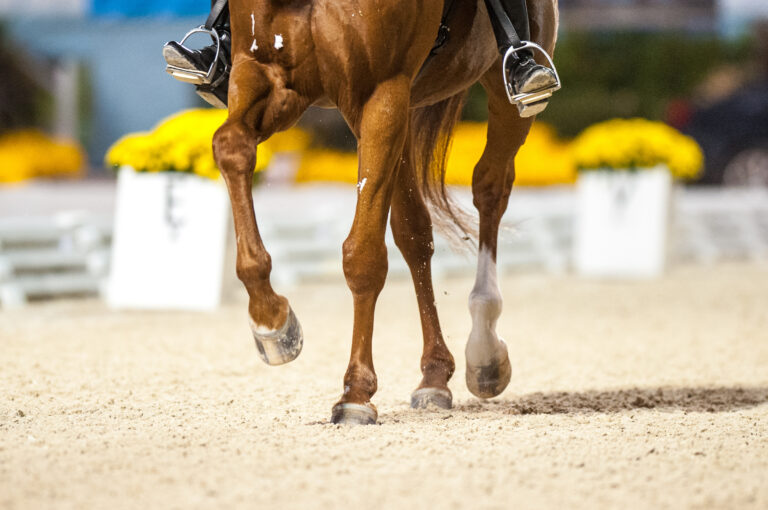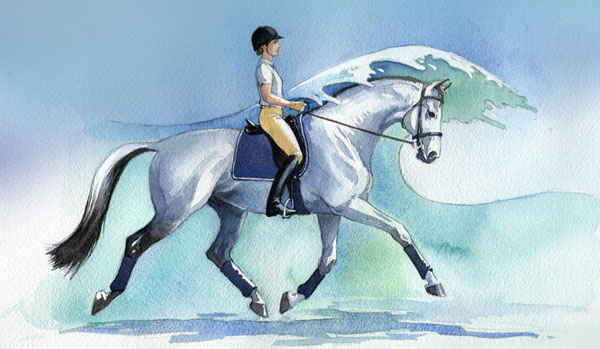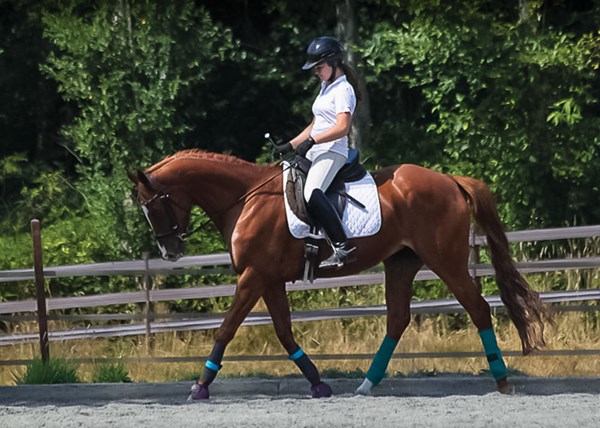
This picture shows Brenna Nordstrom riding in a clinic on her American Hanoverian mare, Welkin, who just turned 9 years old. They currently compete at First Level and have started training some higher-level movements.
Observing the picture, I notice that there appears to be a lot of downhill movement in both the horse and the rider. Welkin’s croup appears higher than her shoulders. The poll, right behind her ears, should be the highest point, not farther back in the neck. In this photo, the mare’s ears are actually lower than her neck, and her stride between her hind legs is longer than the stride of her front legs.
I can see that Brenna is looking down, her wrist is bent down and her lower leg is too far back with her toes pointing down. The picture was also taken at such an angle that the impression of a downhill movement is even more apparent. If one looks at the distance of the track to the bottom of the photograph this becomes clear. Used in the opposite way, this is a photographer’s trick in many auction and sales pictures to change the angle of the picture so that horses look more uphill than they actually are.
I can imagine that regular readers of Dressage Today and “The Clinic” are now a little surprised as I have started pointing out so many faults and not written the nice things first as I usually do. This is often how we look at riders. It is so easy to see all the faults—and then a rider merely becomes a collection of faults and we fail to notice his or her abilities!
With all the faults pointed out, I can say that I like Brenna and Welkin and I am positive that this is just a picture of a less-than-perfect moment. Remember, you can find these moments with any rider.
Because Brenna has a nice deep connection with her seat, she has the talent and the ability to improve and develop. One thing I notice is that she appears very concentrated within herself. Riding dressage requires you to express yourself and your horse to the outside world. I would advise Brenna to look forward, ride forward, lift her head, her hands and her toes and then her horse can lift her shoulders, neck and head and stride out longer.
Dressage needs precision and control. But overcontrolling kills the freedom and beauty of movement. Dare to release and give. Riding with a more forward-giving tendency in your hands is very important. To break her habit of holding back and to encourage Welkin into a better self-carriage, Brenna should concentrate on an interplay of her aids. She should stretch from her seat, look up and encourage Welkin with her legs for more activity in her hind legs. She should reward Welkin by gently pushing both hands a bit forward. If possible, this can become a short release like in the German überstreichen. Soon Welkin will learn that every time she becomes more active behind, she will feel more freedom in front and start carrying herself and move more uphill.
Sometimes in a clinic I use a rhythmic game to help students find a more automatic interplay between activating a horse’s hind legs and controlling the movement without holding them back. I tell my students to try this in trot: For one stride, think about your own balance, uprightness and your seat. In the next stride, think about your legs and the horse’s activity behind. Then think back to your balance in your seat, then to the lightness of the contact, then to your balance. In short it would be: Balance–Activity–Balance–Contact–Balance and repeat.
This interplay of aids always going through the rider’s seat from back to front and back can be understood as the throughness of the aids. If you try this excercise correctly, neither rider nor horse can get stuck in one way. Then they can develop more lightness. I am sure that Brenna has the ability and talent to improve and perform with more elegance and lightness within her riding.
Susanne von Dietze is a leader in equestrian biomechanics. A physiotherapist, licensed Trainer A instructor and judge for dressage and show jumping, she gives lectures and seminars throughout the world, including at the prestigious German Riding Academy in Warendorf. She is a native of Germany and now lives with her husband and three children in Israel, where she competes at the international level. She is the author of two books on the biomechanics of riding: Balance in Movement and Horse and Rider, Back to Back. Find her books at HorseBooksEtc.com.


